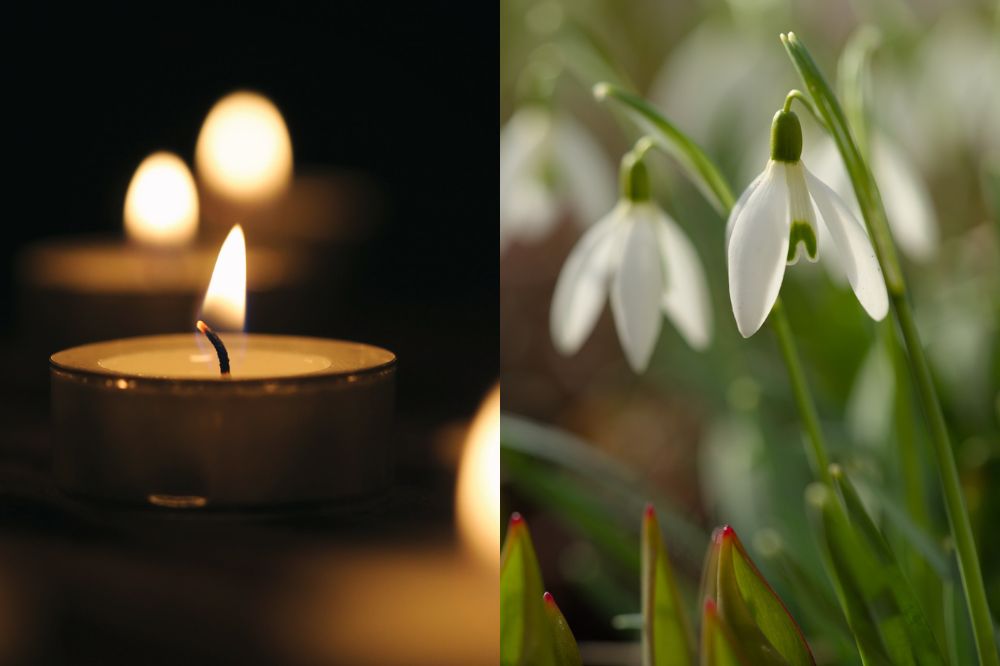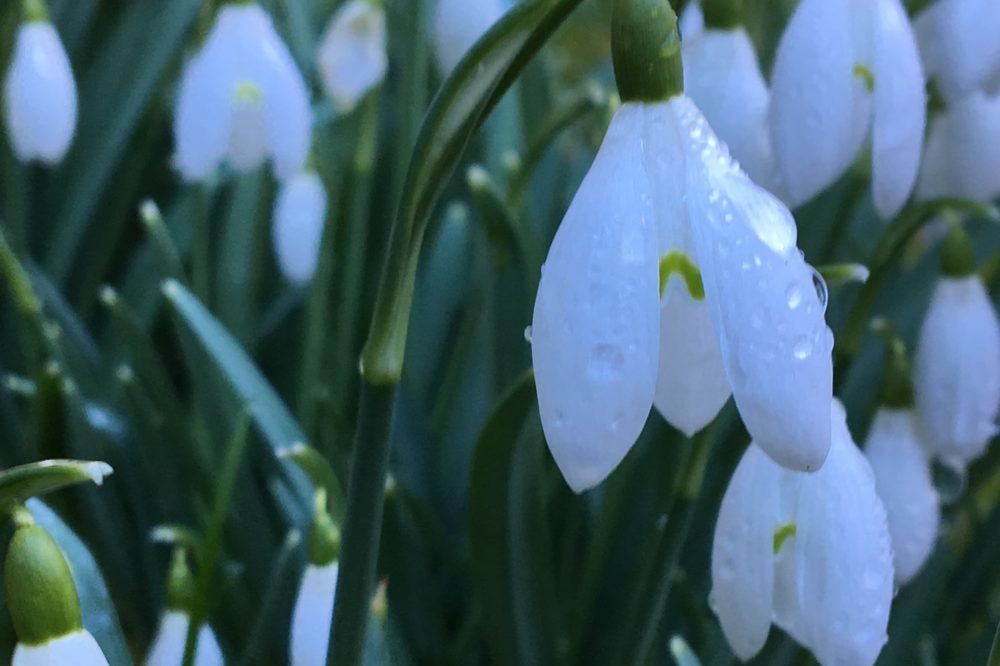Gŵyl Fair Dechrau’r Gwanwyn marked in Wales today

Stephen Price
Whilst many in Wales marked Imbolc and Saint Brigid’s day yesterday, an overlooked Welsh festival, Gŵyl Fair Dechrau’r Gwanwyn takes place today (2 February) which marks the coming of spring.
Known as Gŵyl Fair Dechrau’r Gwanwyn or Gŵyl Fair y Canhwyllau (Mary’s Festival of the Start of Spring or Mary’s Festival of the Candles) marks a change in our gardens and woodlands – with spring announcing its imminence with signs of snowdrops, crocuses, blossoms and a flurry of wildlife activity.
Traditionally, at Gŵyl Fair Dechrau’r Gwanwyn, candles were lit and parlour games player.
Although no longer a fixture on the calendar for most, the tradition has been kept alive at church and chapel, with candle-themes services, typically called Candlemas, taking place to celebrate the date.

Weather divination
According to legend, Saint Brigid visited Wales, crossing the Irish Sea and landing at Trearddur Bay, on Holy Island, Anglesey.
An 8-foot high limestone cross commemorating Brigid is situated above the beach at Trearddur. She is also remembered in the names of the villages of Llansantffraid in Ceredigion, Llansantffraid-ym-Mechain and Llansantffraed in Powys, not to mention St Brides Netherwent and St Brides Wentloog.
Similar to the festival of Saint Brigid, and also sharing the name Gŵyl Ffraed (Bridget’s Feast) in Welsh, a wealth of weather lore exists around Gŵyl Fair Dechrau’r Gwanwyn.
With days lengthening, many an impatient gardener might get caught out thinking that the only way is up with the temperature, but the festival brings with it a reminder similar to the old saying ‘ne’er to cast a clout till May be out’ – that bad weather, and even snow, aren’t yet off the table.
Traditions
People are said to have traditionally visited holy wells to pray for health while walking ‘sunwise’ (clockwise) around the well.
They might then leave offerings, typically coins or strips of cloth/ribbon. Historically, water from the well was used to bless the home, family members, livestock, and fields.
For many, candles were lit to take comfort in getting through another harsh winter, and to focus on thoughts for the new life spring brings.
For others, it’s cause for giving thanks, a symbol of light in the darkness and a promise that good times are to come. It’s pancake day in just under two weeks after all.
Bendithion Gŵyl Fair Dechrau’r Gwanwyn – Gŵyl Fair blessings!
Support our Nation today
For the price of a cup of coffee a month you can help us create an independent, not-for-profit, national news service for the people of Wales, by the people of Wales.






First thing, it should be Gwyl Fair dechrau gwanwyn, not Gwyl Mair…. But as far as I know, the only reference to that name is by Gwallter Mechain (Davies, W., General View of the Agriculture and Domestic Economy of South Wales: Containing the Counties of Brecon, Caermarthen, Cardigan, Glamorgan, Pembroke, Radnor, Volume 1). Only in one carol exists the line ‘Gwyl Fair forwyn, dechrau gwanwyn..’, (Cymru Fyw, 2.02.2023, BBC), which is a poetic description, not a title. But Gwyl Fair y Canhwyllau was, and is, well known.
Duly changed and thanks for the further info – will adapt!
You overlooked St Brides Netherwent and St Brides Wentloog.
I shall add it in – it’ll no doubt get shaken off and used again in future years.
Hyfryd gweld erthygl am yr hen ŵyl Gymreig hon, y byddai ein hynafiaid wedi ei chadw ag arddeliad. Cofier y nodai Gŵyl Fair ŵyl puredigaeth Mam Duw lle cyflwynwyd Crist i Sant Simeon yn y deml ddeugain diwrnod ar ôl ei enedigaeth. Ond cofier hefyd y byddai ein hynafiaid wedi dathlu’r ŵyl hynod hon ar yr hen galendr, felly unarddeg diwrnod yn hwyrach nag yr ydym ni’n ei dathlu heddiw, yr hyn fyddai’n cyfateb i’r 13eg o Chwefror, felly byddai’r nosweithiau’n oleuach a’r tymheredd gymaint â hynny’n fwynach. Ac fe nodai’r ŵyl ddiwedd yr ‘amser gwylad’ sef y cyfnod gyda’r… Read more »